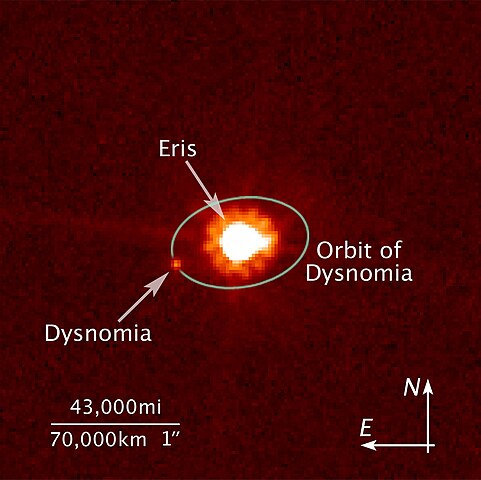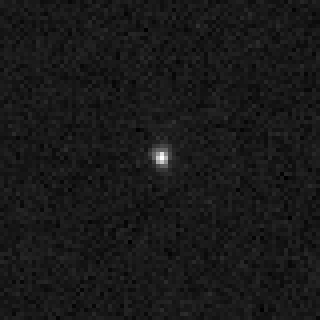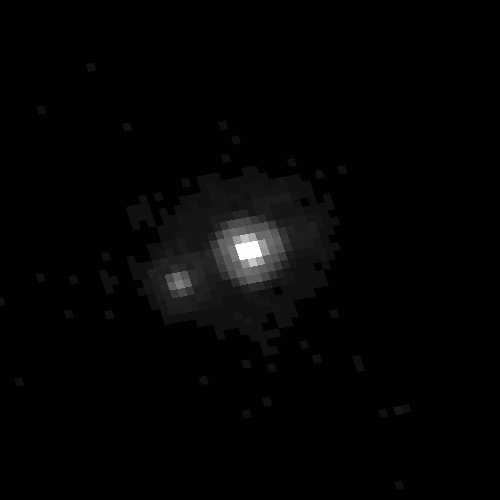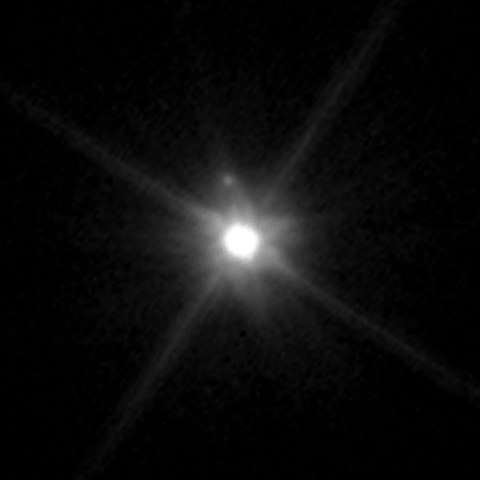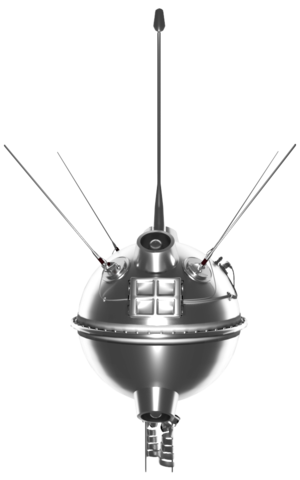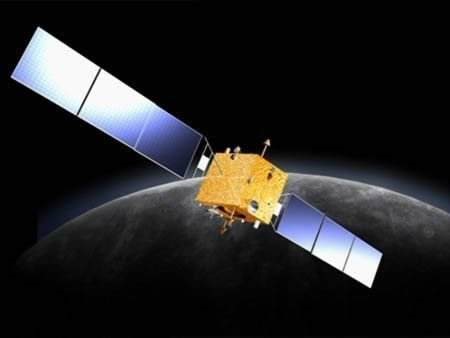1 day / second
0.5 AU
136199 Eris
Dwarf Planet
A large trans-Neptunian dwarf planet slightly more massive than Pluto but smaller in volume, notable for its highly inclined and elongated orbit that takes 557 years to complete.
Key Facts
orbital regime | Kuiper Belt |
learn more | Wikipedia |
mass | 1.6466e+22 kg |
radius | 1,163 km |
hill radius | 0.054 AU |
semi-major axis | 67.864 AU |
eccentricity | 0.436 |
inclination | 44.04º |
longitude of the ascending node | 35.951º |
argument of periapsis | 151.639º |
orbital period | 559.059 years |
surface gravity | 0.083 g |
discovery date | October 21, 2003 |
discovered by | Michael E. Brown, David L. Rabinowitz, and Chadwick Trujillo at Palomar Mountain Observatory |
name origins | Named after Eris, the Greek goddess of strife and discord |
albedo | 0.96 |
material composition | Frozen methane surface |
density | 2.52 g/cm³ |
